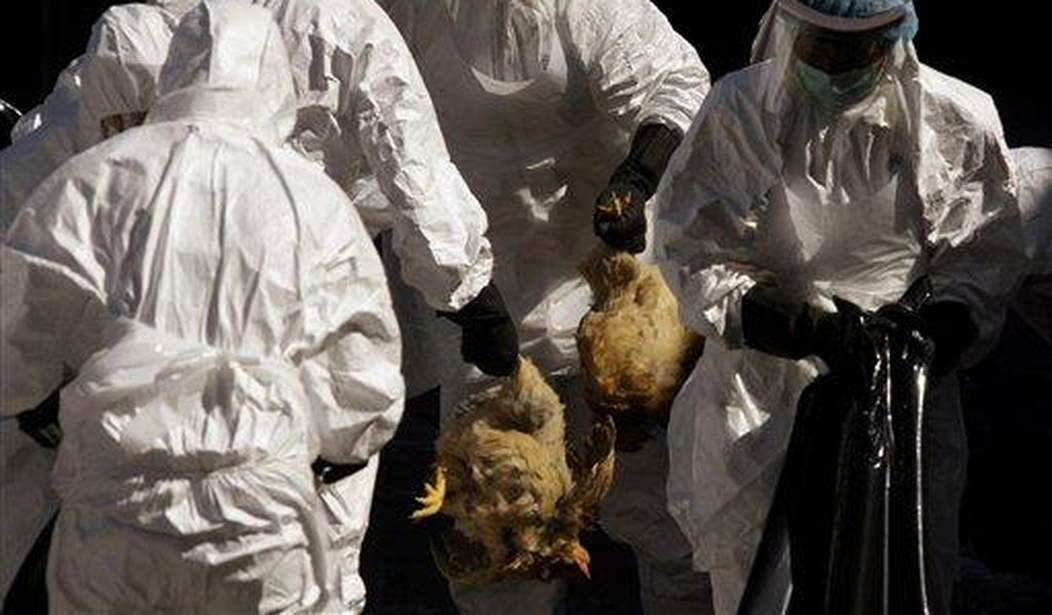Another serious pandemic may be on the horizon, as scientists are carefully watching the current outbreak of H5N1 avian influenza among domestic poultry populations. So far, tens of millions of birds have been killed to stop the spread of bird flu. But there are indications that the virus has successfully made the leap from bird to mammal, meaning that the virus’s mutations are bringing it closer to human transmission.
We’ve been very, very fortunate in the last few decades. But while outbreaks of avian flu have been common, in recent years, strains of bird flu have infected migratory birds spreading the disease far beyond the borders of Asian countries where the virus originated.
Avian influenza is far deadlier than COVID-19. In the rare cases of bird-to-human transmission, 56% of patients have died. But so far, the bug hasn’t figured out how to easily make the jump from bird to human. And epidemiologists believe that if it ever did, the strain of the virus would be far less lethal.
That’s not a reason for complacency, however. And the fact that we share this planet with thousands of pathogens that are at constant war with our immune systems shouldn’t make it any easier to deal with.
Also for our VIPs: A ‘Tripledemic’ of Fear: What Was Once ‘Normal Life’ Is Now a Crisis
Every major communicable disease among humans got its start in the animal world. We can’t share the biosphere without sharing the same diseases and because of that, we’ve been at total war with invisible pathogens since civilization began.
The biology of these creatures is very simple because viruses are the simplest form of life — and probably the original inhabitants of planet earth. Driven by the need to propagate their species, viruses have “learned” very quickly to adapt and change, giving them an extraordinary evolutionary leg up. They don’t “learn” in the human sense; billions of them live and die until one tiny genetic change allows them to make themselves at home in another animal.
That happened with H5N1 a few months ago. An unusual outbreak of bird flu was discovered on a Spanish mink farm, of all places.
Spanish health officials first noticed the outbreak in early October, when the death rate among minks at a large farm in Galicia tripled. Biological samples from the farm’s 52,000 minks contained H5N1. It was the first time bird flu had infected farmed minks in Europe.
Authorities ordered the culling of all the minks at the affected farm. At the same time, they quarantined and tested the farm’s 11 workers. Luckily, none had caught the virus.
What made this outbreak among minks so troubling is that the virus might not only have spread from birds to minks; it may also have spread from minks to other minks, as well.
“The ability to achieve sustained transmission in a mammal is a major leap for flu viruses, so the mink event is a big deal,” James Lawler, an infectious disease expert at the University of Nebraska Medical Center, told The Daily Beast. “It definitely increases the risk for [a] species-jump to humans.”
It’s a long way from minks to humans. And the zoonotic path is not at all clear, nor is it a certainty that bird flu will be any more or less deadly than the regular outbreaks of flu we get every year.
But the bug will keep trying. Not consciously, of course — its very nature commands it to seek out new species to infect. It’s a shame that we humans get in the way.
The good news is that we have vaccines for bird flu that help prevent the spread of the disease. But as we’ve seen with COVID-19, viruses are able to mutate and change, making vaccines far less effective. It’s a war of attrition between us and the bugs, and keeping ahead of the enemy is imperative.










